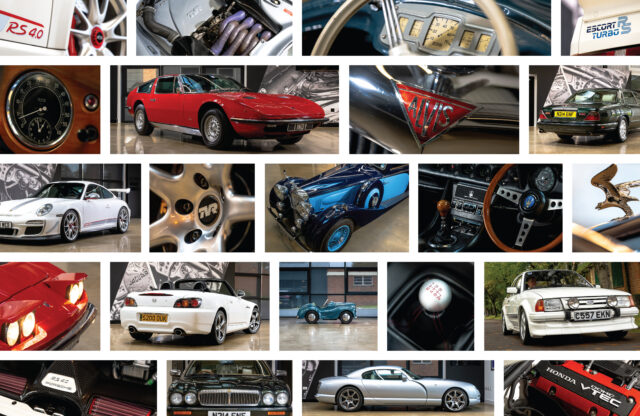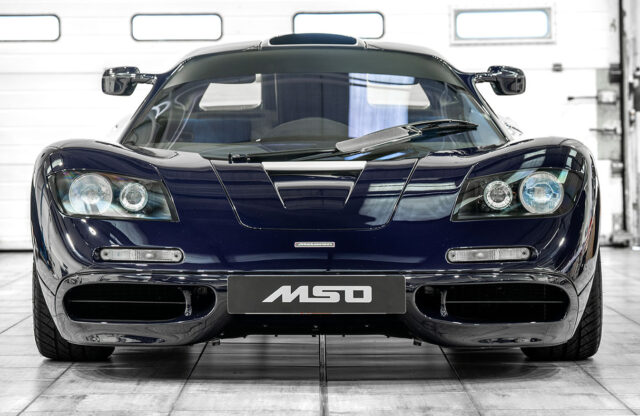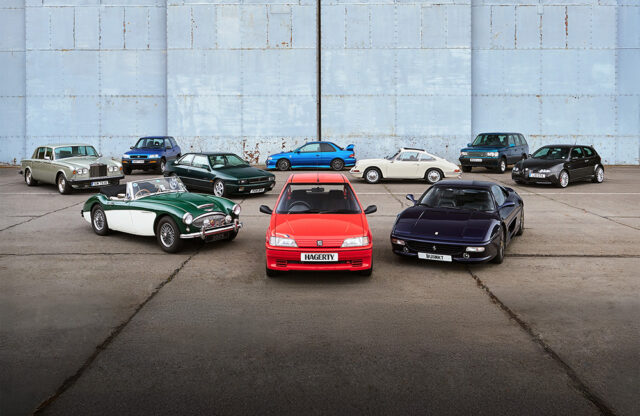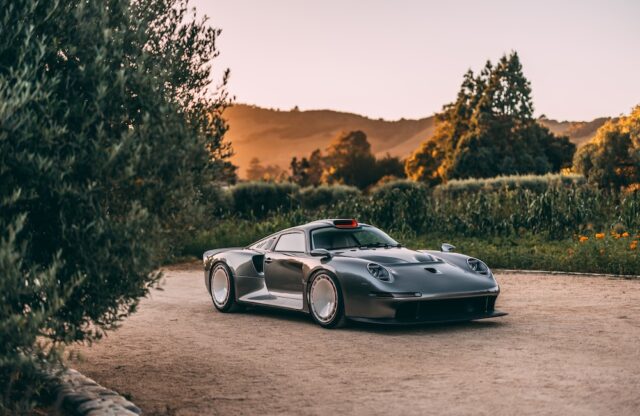WORDS: ELLIOTT HUGHES | PHOTOS: HAGERTY
The global data analysts working for automotive lifestyle and insurance company Hagerty have identified the cars poised to climb in value for the 2024 UK Bull Market List.
Each year, the analysts spend months sifting through sales results and tracking changes in the Hagerty Price Guide to select its Bull Market vehicles, which represent models under increased demand from enthusiasts.
This year, modern classics are on the rise, yet the list remains as diverse as ever, featuring everything from a Porsche 911 GT3 RS 4.0 to an Austin J40 pedal car.
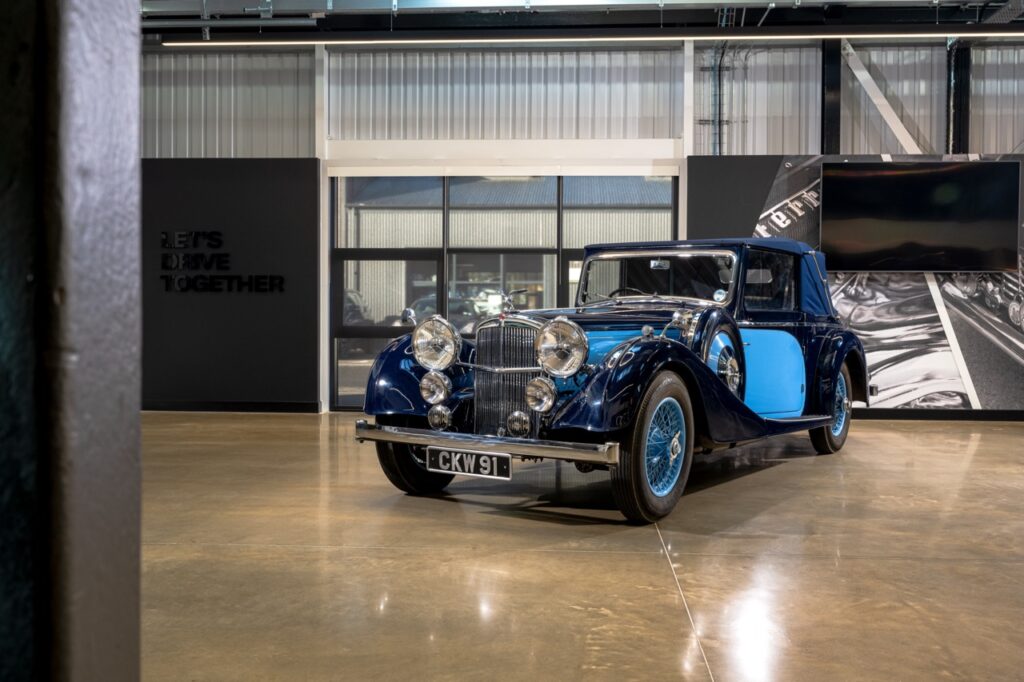
1932-1940 ALVIS SPEED 20 & 25
While modern classics are the big movers in the current market, certain pre-war models remain in demand – and the Alvis Speed 20 and 25 are no exception. Designed for performance and handling, the Speed 20 and 25 offer a driving experience that is absent from many period rivals, but without the price-tag of more exotic equivalents.
Coventry-based Alvis built a total of 1165 Speed 20s between 1932 and 1936, across updates denoted as SA, SB, SC and SD. Following this series, the company transitioned to the production of the Speed 25, of which fewer than 200 models left the factory.
The models were finished in a diverse range of bodystyles. The Speed 20 was offered as a two- and four-door saloon, as well as a drophead coupé, while the Speed 25 was constructed as a four-door sports saloon. They were also rebodied in sportier configurations, such as open two-seaters, by a number of coachbuilders of the era.
All Speed 20s featured straight-six engines with a four-bearing crank and overhead valves, and were capable of clocking 83mph – a decent clip for the time. While not inexpensive in their time, both Speed 20s and Speed 25s were considered high-quality vehicles, and remain excellent-value investments today.
Hagerty’s Valuation Team points out that values have softened a smidge over 2023, likely due to low brand recognition among younger enthusiasts. Despite being overlooked, the Speed 20 and 25 still have plenty to offer; they can cruise at modern motorway speeds with ease and boast features expected in cars built decades later. Adding to the allure is the fact that a Speed 25 in Hagerty’s no.2 (Excellent) condition can be had for around half the value of a Derby Bentley tourer, at £81,600. In general, Hagerty Price Guide average values of all Alvis models have climbed from £43,077 to £56,867 over the past year, representing a 32 percent increase.
1938 Alvis Speed 25 SC drophead coupé
Engine: Inline-six, 3571cc
Transmission and layout: Four-speed manual, front-engined, rear-wheel drive
Power: 106bhp @ 3800rpm
Weight: 1850kg (approx)
Price range, Fair to Concours: £52,000–£99,400
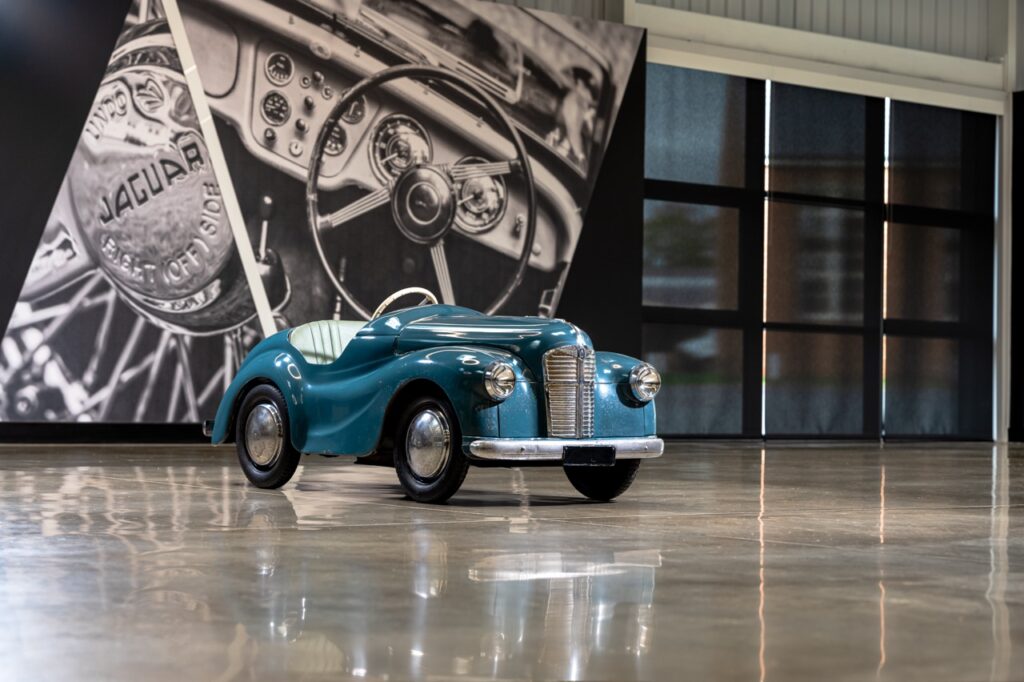
1949-1971 AUSTIN J40
While it’s easy to dismiss the Austin J40 pedal car as a toy, the market clearly demonstrates that it has become a coveted collectable among enthusiasts. Unsurprisingly, the Goodwood Revival’s Settrington Cup has contributed to this phenomenon, and, as with any classic, values correlate to a particular model’s originality, provenance and restoration quality.
The J40 was based on a 1946 prototype that was inspired by the Austin 8 and debuted in the post-war era. Production spanned from 1949 to 1971, resulting in 32,098 units. Although plenty were built, survivors are increasingly rare, given that more than 50 years have elapsed since production ceased.
Growing demand and increasing scarcity have meant that J40 prices have reached parity with the A-series-powered Austin A40. Put simply, the ropiest J40s can be had for £1500, rising to £10,000 for an example in no.1 (Concours) condition. A decent candidate for restoration, meanwhile, can be acquired for around £4000, while the J40’s predecessor, the Pathfinder, can be even more desirable. Predictably, Settrington Cup provenance also increases a car’s value.
1949–71 Austin J40
Engine: Dual-foot pedal
Transmission and layout: Slow/fast-twitch muscles, front-pedalled, front-wheel drive
Power: 0.1bhp @ 40rpm (est.)
Weight: 43kg
Price range, Fair to Concours: £1,500–£10,800

1994–1997 DAIMLER SIX
The X300-generation XJ and Daimler Six were favoured in period by politicians and royalty, but ironically they remain one of the most affordable entries on the 2024 Bull Market List.
Its affordability added to the X300’s good reviews when new, despite inheriting several flaws from its boxier X140 forebear. Styling and interior quality were greatly improved over that car, and so too was the driving experience. Journalists of the era were impressed by the steering precision, body control and ride quality, and its straight-six and Double-Six V12 engines were praised, too.
The finest no.1 (Concours) examples can be had for as little as £10,000, while roadworthy models are available for under £2000; few collector cars offer such incredible value. Thirty years have passed since production ended, and consistently low values mean these cars are only becoming rarer.
1995 Daimler Six
Engine: Inline-six, 3980cc
Transmission and layout: Four-speed automatic, front-engined, rear-wheel drive
Power: 237bhp @ 4800
Weight: 1825kg
Price range, Fair to Concours: £1600–£12,500
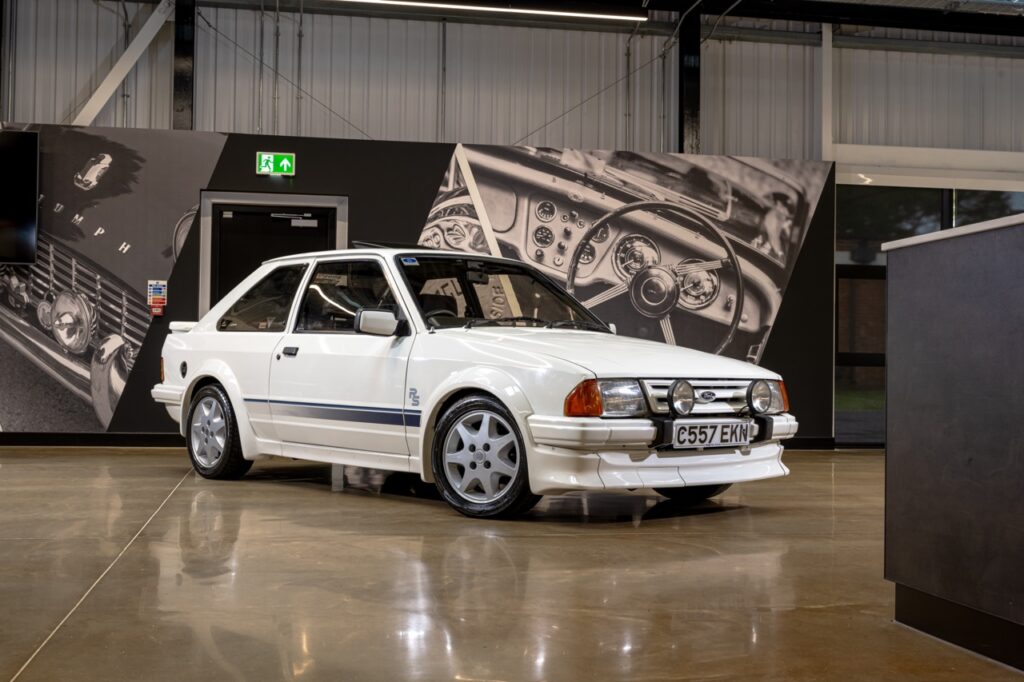
1985–1991 FORD ESCORT RS TURBO
The Ford Escort RS Turbo made headlines in 2022 when Princess Diana’s car sold for an eye-watering £722,500 – some £687,500 over Hagerty’s top value for the model. Even so, Escort RS Turbo values have risen modestly since then, and it still trails contemporary hot hatch rivals such as the Volkswagen Golf GTi and Peugeot 205 GTi.
As a homologation special with affordability and 1980s hot hatch styling on its side, the Escort RS Turbo is an alluring prospect in 2024. Hagerty’s median values for all Ford RS/Cosworth models have risen from £29,886 to £42,225 over the previous five years, led by the Sierra RS500 Cosworth, which is now valued at over £100,000 for a no.1 (Concours) example. With that precedent set, its unsurprising that the Escort RS Turbo made the list.
1986 Ford Escort RS Turbo
Engine: Inline-four, 1597cc, turbocharged
Transmission and layout: Five-speed manual, front engine, front-wheel drive
Power: 130bhp @ 5750rpm
Weight: 975kg
Price range, Fair to Concours: £8,200–£35,800
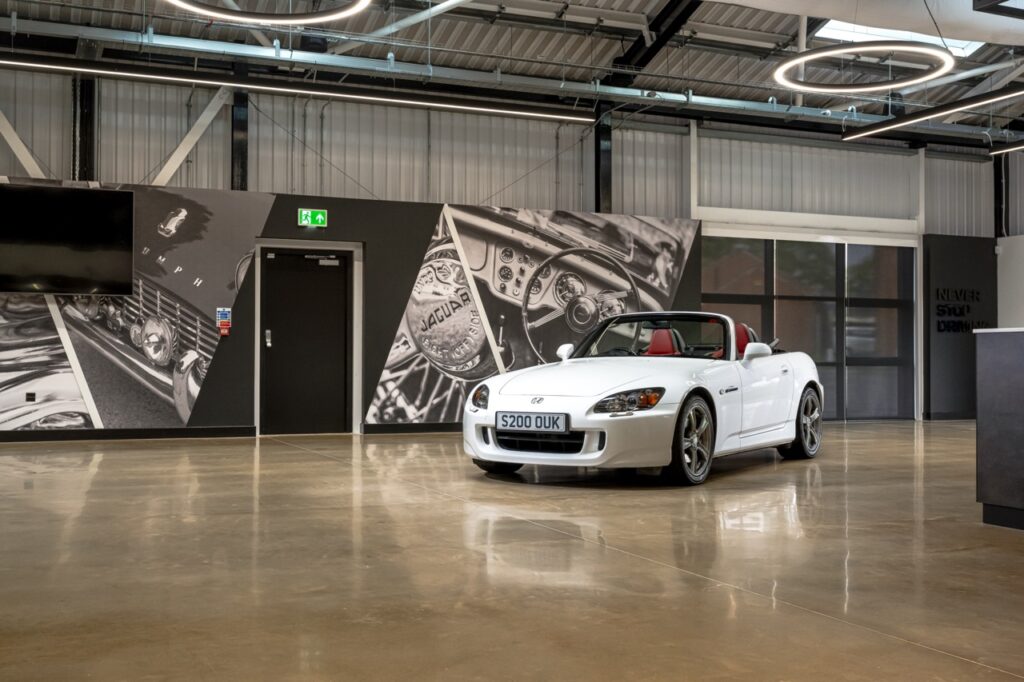
1999–2010 HONDA S2000
Honda’s high-revving roadster arrived in 1999 as the company’s 50th birthday present to itself, and continued a lineage of two-seater sports cars that began with the S500 in 1963. With a 9000rpm red line, its 2.0-litre four-cylinder engine is one of the all-time greats, and sends 237bhp to the rear wheels through a slick six-speed transmission.
If you’re in the market for an S2000, do your research – the nature of the powertrain means they are prone to hard use and also suffer from corrosion issues. That said, Honda reliability means they’re less problematic than many modern classics.
Demographics are a big reason why there has been a 17 percent increase in global policies added in 2023 compared to 2022. Fifty-nine percent of those policy holders are aged 49 or younger, while 17 percent are under 30. Hagerty also points out that the S2000’s appeal to young people has increased by 50 percent since January 2020, which suggests that there could be more owners under 30 than over 50 by 2025.
2009 Honda S2000
Engine: Inline-four, 1997cc
Transmission and layout: Six-speed manual, front-engined, rear-wheel drive
Power: 237bhp @ 8300rpm
Weight: 1274kg
Price range, Fair to Concours: £11,500–£22,000

1969–1975 MASERATI INDY
Intended to compete with the Ferrari 365 GTB/4 Daytona, the Maserati Indy represents excellent value when compared with its Maranello rival in 2024.
The Indy’s styling was penned by Vignale, and the name references Maserati’s wins at the Indy 500 in 1939 and 1940. First powering the Indy was a 256bhp 4.2-litre 90-degree quad-cam V8. Engine capacity and power increased in 1970 to 4.7 litres and 286bhp respectively, before expanding to 4.9 litres and 316bhp in 1972. Maserati built a total of 1104 examples, with the late 4.9-litre cars being the rarest.
Hagerty placed the Maserati Indy on the list because prices have decreased since the pandemic, making it great value for money. Prices reached their peak just before the pandemic at £80,000 for an example in no.2 (Excellent) condition. Today, an equivalent car can be had for £69,200.
1972 Maserati Indy
Engine: V8, 4719cc
Transmission and layout: Five-speed manual, front-engined, rear-wheel drive
Power: 286bhp @ 5500rpm
Weight: 1572kg
Price range, Fair to Concours: £39,000–£69,000 (4.7-litre)
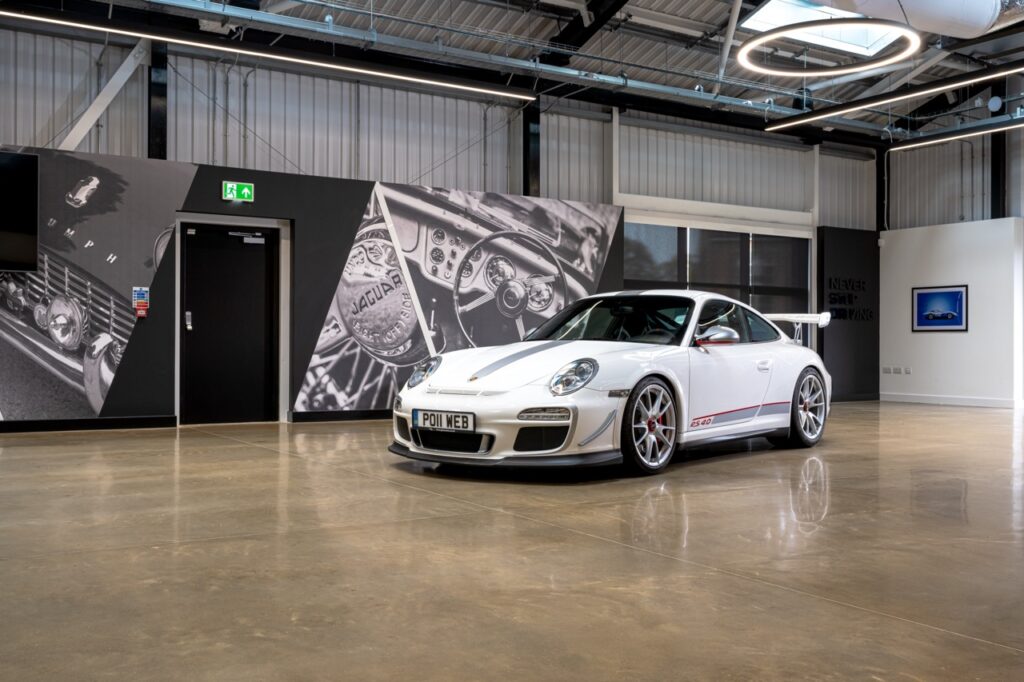
2011 PORSCHE 997.2 GT3 RS 4.0
Rightfully regarded as one of the greatest driver’s cars of all time, the 997.2 GT3 RS 4.0 comes armed with one of the final evolutions of Hans Mezger’s legendary flat-six engine. This particular version of his magnum opus generates 493bhp at 8250rpm and 339lb ft at 5750rpm, which allows the Porsche to reach 0-62mph in just under four seconds and go on to a top speed of 193mph.
The 997 GT4 RS was also the last generation equipped with a manual transmission rather than a PDK dual-clutch automatic, which undoubtedly increases the car’s appeal to driving purists. Porsche built just 600 GT3 RS 4.0s during its 2011 production run.
The 997 GT3 RS was only added to Hagerty’s UK Price Guide in 2022, so data is limited. Despite this, however, the company believes the car’s analogue DNA and legendary engine make it a sure-fire collectable.
The 997.1 with the 3.6-litre powrplant suffered mechanical foibles, although most of those cars’ issues would have been addressed by now. Values climb for the second generation 3.8-litre models and peak at the 4.0-litre, which also happens to be the rarest.
Premiums for the best cars have increased significantly: 35 percent for no.2 (Excellent) 3.6-litres and 66 percent for no.1 (Concours) cars since 2017. Despite being primarily owned by over-50s, Porsche values also benefit from multi-generational appeal.
2011 Porsche 997.2 GT3 RS 4.0
Engine: Flat-six, 3996cc
Transmission and layout: Six-speed manual, rear-engined, rear-wheel drive
Power: 493bhp @ 8250rpm
Weight: 1360kg
Price range, Fair to Concours: £290,000–£560,000
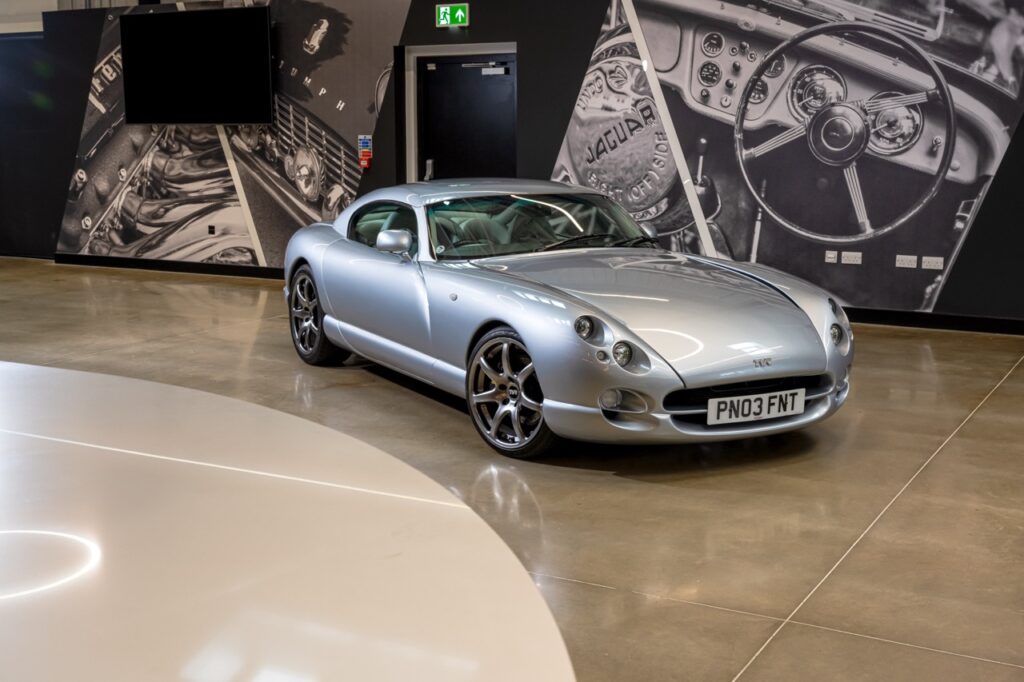
1996–2003 TVR CERBERA
Launched in 1996, the TVR Cerbera pairs dramatic, muscular styling with either a Red Rose 440bhp 4.5-litre V8 or a 350bhp 4.0-litre straight-six. The Cerbera is all about driving purity, with no driving aids, a kerbweight of just 1100kg – the same as a modern Alpine A110 – and powerful engines, it’s no wonder the Cerbera has a reputation for being unforgiving.
That said, Cerberas are far less intimidating than you might expect, helped by a long-travel throttle and a firm brake pedal that serve as a great substitute for traction control and ABS. It also handles capably and makes a great noise, whichever engine you choose.
Hagerty notes that the Cerbera is gaining value, with prices rising by almost three percent over the past 18 months from £25,513 to £26,181. The most sought-after Red Rose V8 models have increased even more during that time, breaking the £40,000 threshold. Few cars in this price range offer such head-turning looks alongside an analogue driving experience that is all but extinct in modern vehicles.
Similarly to the 996 Porsche 911 and Jaguar XJ220, the Cerbera is a car that looks set to outgrow its initially unfavourable reputation, as time has allowed issues to be addressed and a more favourable reputation to blossom. Hagerty believes the Cerbera may be undergoing a similar shift.
2003 TVR Cerbera
Engine: V8, 4475cc (Speed Eight Red Rose)
Transmission and layout: Five-speed manual, front-engined, rear-wheel drive
Power: 440bhp @ 7250rpm
Weight: 1190kg
Price range, Fair to Concours: £27,100–£41,200
